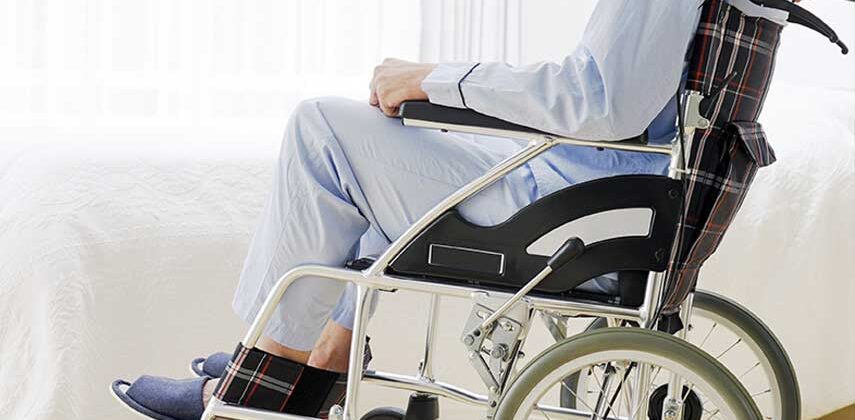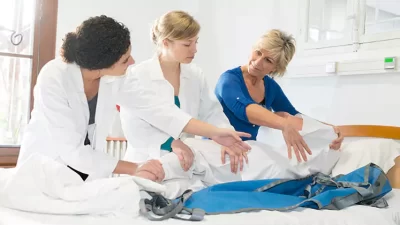A safe and active lifestyle is dependent on strong muscles, bones, and joints. Older adults living in assisted homes, nursing homes, and other facilities are more prone to experiencing joint injuries due to weaker bodies. To keep them from injuries, it’d be wise to adopt healthier practices, be aware of risks and responsibilities, and recognize patterns and trends in care facilities.
There are many common joint-related injuries people experience, and no one is exempted from these unfortunate accidents. Physical activities, slips, and falls are some reasons why someone can incur these injuries. In most cases, joint damage can be prevented.
Common Injuries Among The Elderly
The good news is stretching and exercising correctly can prevent injuries by strengthening the joints. If you have a loved one or an elderly parent living in assisted homes, check this helpful site and read below to be aware of the different joint-related injuries usually happening in care facilities.
1. Strain
A strain occurs when a muscle or tendon is overstretched, causing the fibers to tear. You can have your loved ones checked if they suffer from several symptoms of a strained muscle, including localized pain, stiffness, discoloration, and bruising. Strains can occur in everyday life as well as during athletic activity. Although athletes are more prone to strains and sprains, these could happen to elderlies if they exerted too much effort in their physical exercises and stretches.
Apply the following for treating muscular strains in their acute phase:
- Rest – Keep the injured body part immobile.
- Ice – Cool the injury site with ice to reduce swelling by decreasing blood flow. Ice should never be left on longer than 15 minutes.
- Compression – Use a sprain bandage to compress the strained area and reduce swelling.
- Elevation – When conveniently possible, elevate the injured area, so blood doesn’t pool in it.
Ice and compression methods will help speed up the healing process, preventing further swelling and pain. The inflammation must be controlled for the injured area to heal, and further icing reduces fluid leakage in the injured area.
2. Rheumatism And Arthritis
Inflammatory diseases such as rheumatoid arthritis affect multiple tissues and organs but are most common in joints used for movements. A rheumatic disorder refers to various medical conditions affecting joints or connective tissues.
There’s no frequent use of ‘rheumatism’ in medical literature nor is there any recognized disorder called ‘rheumatism.’ But rheumatic diseases refer to conditions affecting connective tissues.
Meanwhile, arthritis can take many forms. Among all disorders of the joints, osteoarthritis (degenerative joint disease) is the most common. An injury to the joint, an infection, or aging may all cause it. When your loved one suffers from this, don’t be surprised as they usually happen to older adults. Apply measures to get fast relief and don’t let them suffer for a long time.
Psoriatic arthritis, rheumatoid arthritis, and other autoimmune diseases are examples of different forms of arthritis—infectious arthritis resulting from joint inflammation. Arthritis patients complain most about joint pain. If your elderly parent suffers from this, ensure to consult a doctor and confirm whether it’s a rheumatic arthritis disorder. In most cases, chronic pain may occur in a particular joint.
It’s not uncommon for arthritis pain to be caused by inflammation around the joint and muscle strain caused by forceful movements. When this occurs, advise your loved one to rest their joints and go for therapy and rheumatic recovery therapy.
3. Shoulder Injuries
Here are some common shoulder injuries that can be found among patients in care facilities:
-
- Dislocated Shoulder
In a typical case, the humerus ball pops out of the socket when the shoulder is pulled outward. Dislocations are most frequently caused by pulling the arm unexpectedly or when the muscles are overwhelmed.
Frequent dislocations characterize an unstable shoulder. If your loved one suffers from a dislocated shoulder, it’s vital to have them enroll in a physical therapy session to heal the shoulder pain.
-
- Tear On The Rotator Cuff
A rotator cuff is a collection of four tendons connecting the arm bone (humerus) to the upper end of the shoulder. Typically, these muscles transmit motion and stability to the arm from the shoulder blade (scapula). Degenerative changes (cuff wear) or injuries (cuff tears) can lead to rotator cuff problems.
Quantity and quality determine a tendon’s ability to heal. Weak tendon tissue is often observed in older people, smokers, and people with cortisone injections. In contrast, victims of a significant fall frequently possess a healthy tendon that can be repaired if treatment is initiated right away after the injury happened.
4. Elbow Injuries
Another type of joint-related concern common among care facilities is elbow injuries. Typically, elbow problems are caused by injury. Look at the two disorders below:
Tennis elbow and golfer’s elbow are two of the most common overuse injuries at the elbow. A characteristic of the golfer’s elbow is it consists of the tendon of a common flexor, originating at the middle of the elbow.
An elbow injury suffered while playing tennis occurs at the origin of the common extensor. If your family member is either a tennis or golf player, there are some possibilities they suffer pain from tendonitis.
-
- Elbow Fractures
Three bones form the elbow joint, and any combination of these can result in a fracture. Older adults may suffer from elbow fractures if they experience slips and falls.
5. Knee Injuries
There’s no known cause of knee pain, but conditions such as arthritis, trauma, and misalignment can all lead to it. Minor injuries can often be treated at home using rest and ice, but the severe ones require surgery.
Knee problems are closely related to physical fitness. A physically unfit person may experience pain from patellofemoral compression while climbing stairs, but someone else wouldn’t if they’re used to such physical activity.
Conclusion
Exercise or participating in physical activity shouldn’t push your elderly loved ones beyond their limits. Ensure they know how to care for their joint health and conditions. Moreover, while some accidents happen in nursing homes, repeated mistakes and serious injuries could signify abuse or neglect.
You should make sure your loved one gets medical attention right away if they’ve been injured. Be aware of the common joint injuries presented in this article, so you can raise these concerns to your loved one’s care facilities. Be aware of the necessary things required to do when such incidents occur.







 This article changed my life!
This article changed my life! This article was informative.
This article was informative. I have a medical question.
I have a medical question.
 This article contains incorrect information.
This article contains incorrect information. This article doesn’t have the information I’m looking for.
This article doesn’t have the information I’m looking for.